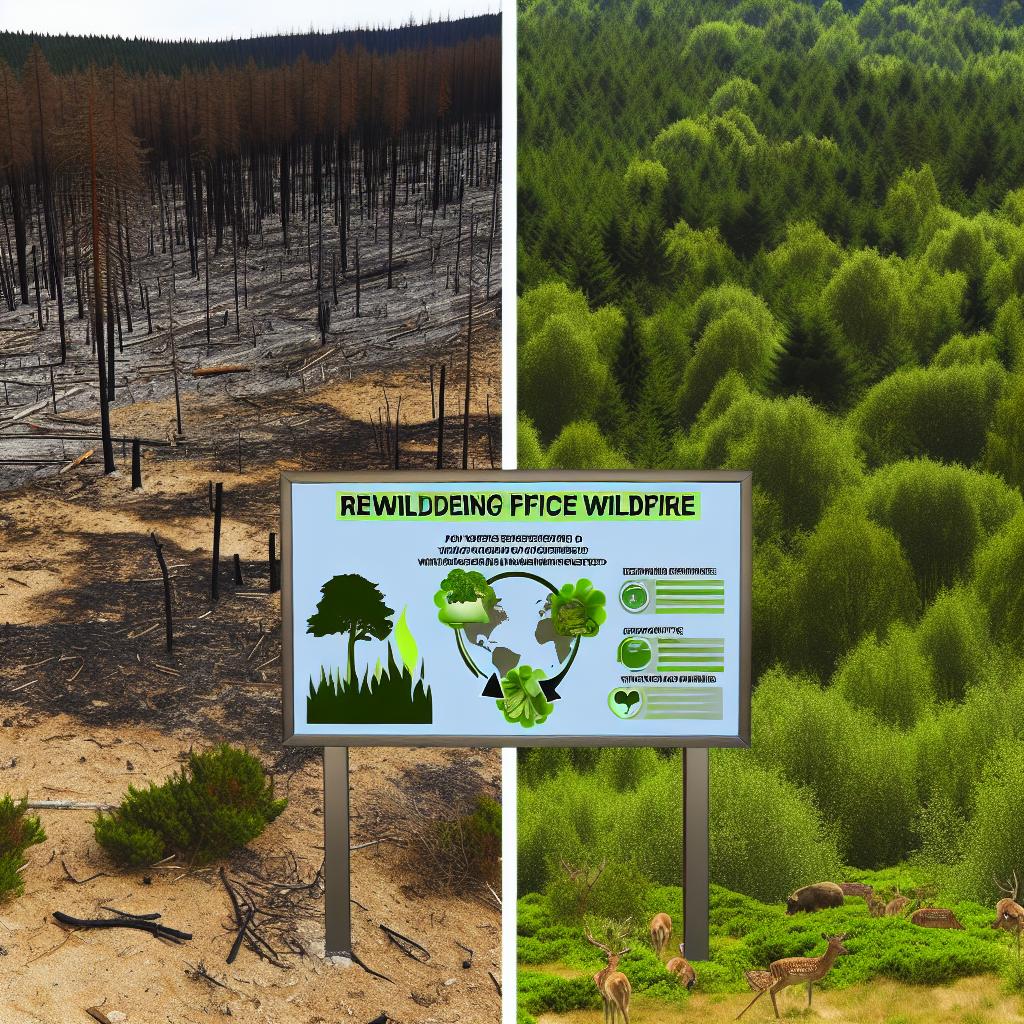
How Rewildering Can Reduce the Risk of Wildfires
Understanding Rewildering
Rewildering is a forward-thinking conservation strategy focused on restoring natural ecosystems to a state closer to their original wildness. Primarily, the goal is to reintroduce native flora and fauna and facilitate the dominance of natural processes over human interventions. This method not only serves to promote biodiversity but also strengthens the resilience of landscapes against various environmental threats, including wildfires. By embracing the principles of rewildering, ecosystems can potentially return to a self-sustaining condition, effectively reducing human impact and fostering an environment conducive to various species that naturally adapted to the region.
The Role of Vegetation in Wildfire Management
Vegetation is a critical element in the dynamics of wildfires, with its presence and type largely determining both the likelihood and intensity of fires. In traditional land management practices, landscapes often undergo alterations to cater to agricultural needs or urban expansion. Such modifications can inadvertently increase the fire risk as diverse ecosystems are replaced with monocultures or vegetation types that are highly flammable. Rewildering offers a contrasting approach by promoting the growth of native plant species. These species are intrinsically better adapted to local environmental conditions and often exhibit natural mechanisms to either resist or recover from fires. By fostering a vegetation community that is less prone to severe wildfires, rewildering plays a crucial role in wildfire management.
Native Species and Fire Resistance
Native plant species have evolved over long periods, acquiring abilities to withstand the specific fire regimes of their environments. Certain plants, for example, possess thicker bark which provides a protective layer against fire. Others have developed the ability to retain moisture more effectively, making them less susceptible to ignition. Promoting the growth of such species through rewildering can significantly reduce the intensity and spread of wildfires in an area. Rewildering efforts focus on these species to create landscapes resilient to fire while conserving the ecological balance.
Enhancing Natural Firebreaks
Natural firebreaks such as rivers, wetlands, and rocky outcrops form part of the landscape’s inherent defense against wildfires. These features serve as natural obstacles that interrupt the trajectory of a fire, aiding in its control and management. Incorporating the restoration and maintenance of such natural barriers can form a critical component of a rewildering strategy aimed at wildfire risk reduction. By enhancing these natural firebreaks, it’s possible to create effective buffers that work in tandem with resilient vegetation, providing a comprehensive approach to wildfire management.
Wildlife’s Role in Managing Vegetation
The role of wildlife in managing vegetation is another pivotal aspect of the rewildering process. Herbivorous animals contribute to vegetation control by grazing, which prevents the accumulation of dry and combustible materials that often fuel wildfires. By fostering a thriving wildlife population through rewildering, natural grazing patterns are reinstated. This reduces potential fuel sources for fires and promotes a balance in the ecosystem. Additionally, the presence of a diverse range of animal species contributes to the dispersal of seeds and the cycling of nutrients, further supporting robust plant communities.
Human Impacts and Rewildering Efforts
Human activities, including urban expansion and agricultural practices, significantly alter landscapes, often increasing their susceptibility to wildfires. Rewildering efforts aim to address these impacts by restoring ecological integrity. By initiating these efforts, there is an opportunity to rebuild natural systems that are equipped to handle environmental challenges more effectively. Local communities and governmental bodies are increasingly recognizing the importance of supporting rewildering initiatives, understanding that nurturing resilient ecosystems offers long-term benefits to both nature and human populations.
Collaborative Approaches and Policy Support
Successful rewildering is frequently the result of effective collaboration among diverse groups, including conservationists, policymakers, and local communities. Developing comprehensive policies that prioritize land restoration and allocating funding to projects aimed at ecosystem restoration are essential elements of supporting these initiatives. Encouraging landowners to engage in rewildering efforts by offering incentives is also a promising strategy. Such policies and collaborative efforts ensure that both private and public lands are managed in ways that contribute positively to the overall health and resilience of the environment.
By implementing rewildering strategies, there’s an opportunity for landscapes to not only recover from human impacts but also to thrive, maintaining biodiversity and ensuring the sustainability of natural systems. This holistic approach to conservation emphasizes the interconnectedness of wildlife, vegetation, and human communities, highlighting the benefits of adopting practices that support ecological balance. For further information on the strategies employed in rewildering efforts and their broad array of benefits, interested individuals can explore established organizations such as Conservation International, which provides extensive resources and research on conservation initiatives.